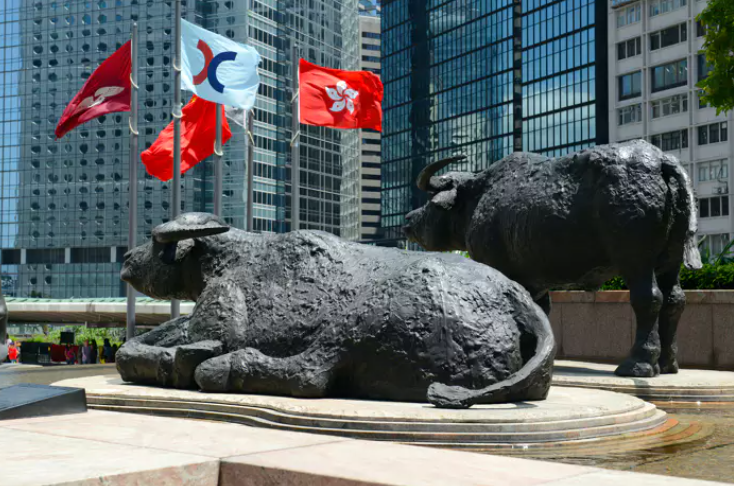
Alice Wang
Mar 02, 2023 16:08
It was a bearish morning for the Asian markets, with the Hang Seng Index giving up some gains from the China PMI-fueled rally.
Economic indicators from the US and hawkish Fed chatter hit investor risk sentiment this morning. In February, the US ISM Manufacturing PMI continued to reflect a contraction across the sector.
However, sub-components of the report pointed to a pickup in inflationary pressure, weighing on riskier assets.
The ISM Manufacturing PMI increased from 47.4 to 47.7 in February. While the continued contraction across the manufacturing sector was bearish, the inflation sub-component showed further evidence of sticky inflation.
In February, the ISM Manufacturing Prices Index jumped from 44.5 to 51.3 versus a forecasted 45.1. Hawkish Fed commentary also fueled Fed Fear, with Fed Dove Neel Kashkari talking about being open to a 50-basis point rate in March.
The NASDAQ Composite Index and the S&P 500 responded to the stats and the Kashkari comments, falling by 0.86% and 0.47%, respectively. The Dow avoided the red, eking out a 0.02% gain.
This morning, the US Futures had a mixed session. The Dow mini was up 69 points, while the NASDAQ mini was down 54.75 points, reflecting investor uncertainty ahead of the US session.
It is a relatively busy day on the US economic calendar. US jobless claims, unit labor costs, and nonfarm productivity numbers will be in focus. While nonfarm productivity numbers will draw interest, the jobless claims and unit labor costs will likely have more influence.
A further decline in initial jobless claims, a jump in labor costs, and hawkish Fed chatter would further fuel market bets of a more hawkish Fed monetary policy outlook. FOMC member Waller will speak after today’s stats. Investors will want to know how high the Fed will be willing to go.
However, following the PMI numbers from China, today’s losses were modest considering the US inflation numbers, Fed commentary, and today’s stats.
The ASX 200 was down 0.02%. Disappointing building approval figures failed to spook investors. In January, building approvals tumbled by 27.6%, reversing a 15.3% increase from December. Economists forecast a more modest 8.0% decline. The numbers reflected the effects of RBA monetary policy on the housing sector.
Mining stocks continued to move northwards. Rio Tinto (RIO) and BHP Group Ltd (BHP) were up by 3.75% and 3.61%, respectively, with Fortescue Metals Group (FMG) gaining 3.80%. Newcrest Mining (NCM) trailed, rising by 1.56%.
Oil stocks were also on the move. Woodside Energy Group (WDS) and Santos Ltd (STO) saw gains of 1.60% and 0.57%, respectively. WTI Crude and Brent Crude gains delivered support, with Brent Crude up 0.07% to $84.37 this morning.
However, Bank stocks continued to struggle. ANZ Group (ANZ) and Westpac Banking Corp (WBC) slid by 2.18% and 1.81%, respectively. Commonwealth Bank of Australia (CBA) and National Australia Bank (NAB) saw losses of 1.21% and 1.11%, respectively.
The Hang Seng was down 0.40% this morning as investors shifted attention to the US economic calendar and the Fed. There were no stats from China or HK to influence sentiment this morning.
However, HK retail sales numbers for January will be out after today’s market close.
Looking at the main components of the Index, Tencent Holdings Ltd (HK:0700) was down 1.57%, with Alibaba Group Holding Ltd (HK:9988) sliding by 4.46%.
However, it was a mixed morning for banking stocks. HSBC Holdings PLC fell by 0.16%, while China Construction Bank (HK: 0939) and Industrial and Commercial Bank of China (HK:1398) saw gains of 1.01% and 0.25%, respectively.
CNOOC (HK: 0883) found support from the upswing in crude oil prices, rising by 0.36%.

Mar 01, 2023 15:37

Mar 03, 2023 14:49